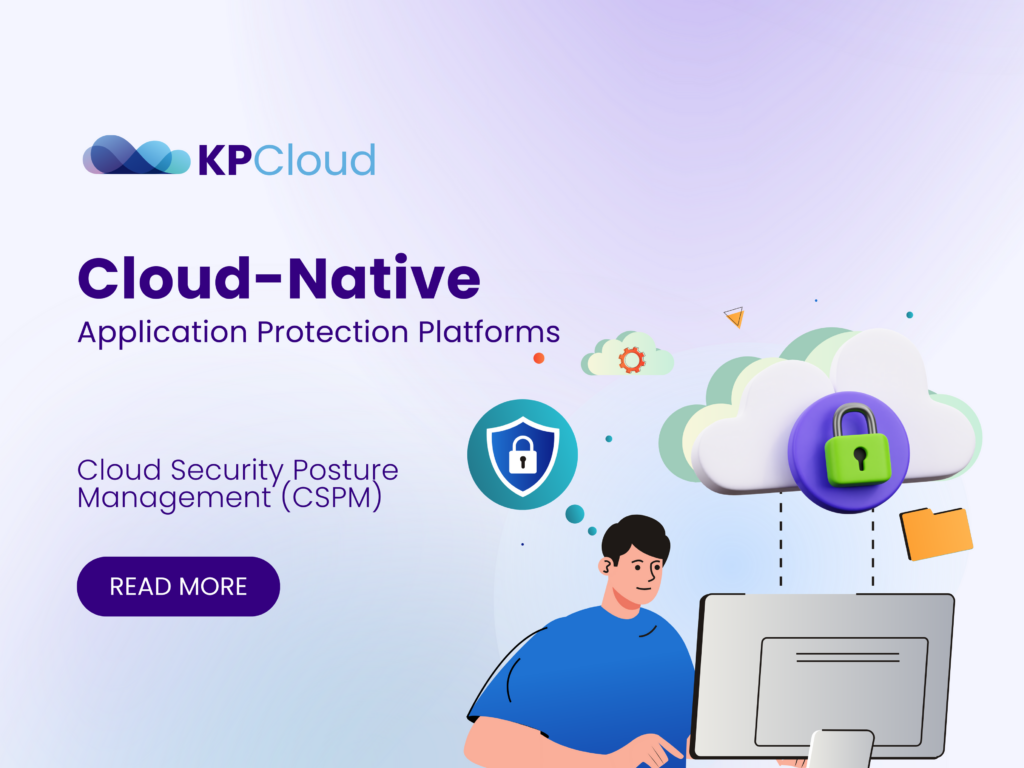Introduction:
we delve into the world of Cloud Native Application Protection Platforms (CNAPPs), an innovative solution that unifies various cloud security capabilities into a single platform. In this blog, we will explore the fundamental elements of CNAPPs, their key benefits, and the critical components that make up these platforms. Additionally, we will examine a real-life case study showcasing the advantages of adopting a CNAPP solution. So, without further ado, let us embark on this journey to understand how CNAPPs simplify and strengthen security in modern cloud environments.
CNAPP stands for Cloud Native Application Protection Platform. It is an integrated security platform that unifies various cloud security capabilities like Cloud Security Posture Management (CSPM), Cloud Workload Protection Platform (CWPP), Cloud Infrastructure Entitlement Management (CIEM) etc. into a single solution. Cloud-Native Application Protection Platforms (CNAPP) offer a robust and integrated solution to security in modern cloud environments. As organizations increasingly embrace cloud and containerized applications, CNAPPs provide a way to unify cloud security by consolidating capabilities like CSPM, CWPP, CIEM, and DevOps security under one umbrella.
Key takeaways include:
- CNAPPs enable “shift left” security allowing vulnerabilities to be caught early in the software development lifecycle through integration with coding pipelines. This minimizes costs of fixing issues after applications reach production.
- By providing a central platform for cloud security and compliance monitoring, CNAPPs create operational efficiencies for security teams. Advanced analytics also help address “alert fatigue” by prioritizing the most critical threats.
- Leading CNAPP solutions leverage threat intelligence and security insights across cloud providers’ global networks to offer superior protection compared to traditional, on-premise tools.
- As illustrated in the case study, organizations can quantify benefits from CNAPP adoption such as risk reduction, productivity gains, and significant cost savings by consolidating multiple security solutions.
The purpose of a CNAPP is to simplify and strengthen security across the entire application lifecycle – from development to deployment to runtime. It aims to shift security “left” in the software development lifecycle and address vulnerabilities early on rather than just relying on security patches.
Some key capabilities that set CNAPPs apart:
- Threat intelligence integration: CNAPPs integrate threat intelligence to prioritize the most critical vulnerabilities and reduce risk exposure.
- Centralized compliance and permissions management: CNAPP provides a single view for managing data governance, compliance monitoring and least privileged access controls.
- DevOps security management: It enables collaboration between security and development teams on a shared platform with common workflows and data. This allows embedding security earlier into application code.
- Comprehensive workload protection: CNAPPs improve visibility across workloads deployed on virtual machines, containers, serverless etc. to detect issues.
- Ease of use: By consolidating multiple point solutions into a single platform, CNAPPs reduce complexity and make security management more efficient.
CNAPP is important for modern enterprises to strengthen their security posture across cloud-native and hybrid environments. The integrated nature of CNAPP allows organizations to eliminate gaps, reduce tool sprawl and complexity.
The key components that make up a Cloud Native Application Protection Platform (CNAPP):
- Cloud Security Posture Management (CSPM): CSPM continuously assesses the overall security posture across cloud environments. It provides visibility into misconfigurations and vulnerabilities, along with automated remediation.
- Multipipeline DevOps Security: This enables developers and security teams to collaborate on managing security across all development pipelines. It allows scanning code and infrastructure-as-code configurations early to prevent issues reaching production.
- Cloud Workload Protection Platform (CWPP): CWPP protects workloads like containers, VMs, databases etc. running across cloud environments. It detects and responds to threats in real-time based on the latest threat intelligence.
- Cloud Infrastructure Entitlement Management (CIEM): CIEM centralizes management of permissions across cloud and hybrid environments. It enforces least privilege access to prevent data leaks.
- Cloud Service Network Security (CSNS): CSNS complements CWPP by providing real-time protection for cloud infrastructure components. This includes distributed denial of service protection, web application firewalls, load balancing and more.
These integrated components span across infrastructure, workloads, networks, identities and the application development lifecycle. Together they provide comprehensive visibility and protection for cloud-native applications.
Some of the key benefits of implementing a Cloud Native Application Protection Platform (CNAPP):
- Better protection against cyberthreats: A CNAPP provides broad and deep security insights across cloud environments. The integration with the cloud allows for superior threat protection compared to traditional on-prem solutions.
- Cost savings: CNAPPs consolidate various point solutions into a single integrated platform. This eliminates overhead costs of managing multiple vendors and fragmented tools. Further cost savings come from effectively preventing breaches which can be enormously expensive.
- More efficient security operations: A CNAPP solution correlates alerts and prioritizes threats to address “alert fatigue”. This allows security teams to focus on the most critical issues. Increased visibility and fewer tools also create operational efficiencies.
- Enables “shift left” security: CNAPPs facilitate collaboration between developers and security teams early in the software development lifecycle. This embeds security in application code rather than leaving it as an afterthought.
- Automates policy enforcement and risk detection: Features like automated entitlement management across cloud environments and continuous compliance monitoring help maintain strong security posture as organizations scale cloud usage.
CNAPP’s integrated nature facilities efficiency gains, cost savings and allows organizations to keep up with the evolving threat landscape.
A CNAPP implementation checklist covers critical areas to consider when deploying a Cloud Native Application Protection Platform solution across the organization’s infrastructure and workflows. It ensures the key fundamentals are incorporated into the rollout strategy. CNAPP Implementation Checklist:
- Selecting a leading CNAPP vendor: Research and evaluate vendors that have extensive experience securing cloud native environments. Ensure the solution has cutting-edge capabilities to detect sophisticated threats using analytics and threat intelligence. Confirm that the vendor will provide full support during and after deployment.
- Choosing a comprehensive single-provider platform: Seek a holistic vendor solution that provides the complete CNAPP capabilities – CSPM, CIEM, CWPP, CSNS etc. Consolidating multiple point solutions under one umbrella will maximize risk coverage and minimize gaps across hybrid multi-cloud environments.
- Reducing overwhelm from excessive alerts: Assess tools that leverage analytics to contextualize, correlate and prioritize alerts. This will enable the Security team to focus on the most critical threats first. Planning upfront for smart alerting will prevent alert fatigue.
- Securing all environments in use: Catalog all production infrastructure – public clouds, private data centers, containers and traditional virtual machines. Confirm the CNAPP solution can integrate security across these environments to avoid blindspots.
- Embedding security earlier into coding: Devise a security evangelization plan for Developers to emphasize secure coding practices. Ensure the CNAPP provides hooks for embedding security checks into CI/CD pipelines to shift security left.
- Planning for organizational change: Anticipate that adopting CNAPP will require new cross-team workflows. Create a change plan early for Dev and Security teams to ease into collaboration. Identify gaps in cloud security skills and fill them proactively.
The checklist covers vendor selection, scope of coverage, effect on teams, and change impacts when implementing a CNAPP. Prioritizing these critical areas will lead to a more successful rollout.
Overview of Leading CNAPP Solutions
Microsoft Defender for Cloud
- Provides end-to-end cloud security for workloads across AWS, GCP and Azure
- Leverages threat intelligence and security analytics from Microsoft’s global cloud platforms
- Key capabilities include CSPM, CIEM, CWPP, integrated DevOps security, and broad coverage of cloud infrastructure and services
- As a major cloud provider itself, Microsoft can offer strong visibility, analytics and protection for cloud workloads
Palo Alto Networks Prisma Cloud
- Delivers CNAPP capabilities including runtime vulnerability management, web application and API security, compliance enforcement
- Integrates with host and network security for comprehensive protection
- Provides security visibility, threat detection and compliance monitoring across multi-cloud environments
Additional CNAPP Vendors:
- Established vendors like FireEye, Sophos, Check Point, Qualys and Wiz offer CNAPP platforms with capabilities in subsets of CNAPP components
- Differentiate based on areas like advanced analytics, third-party integrations, level of automation and extent of IaC/CI/CD integration
Microsoft Defender for Cloud is an emerging leader in CNAPP space given Microsoft’s scale in cloud platforms. And vendors like Palo Alto Networks offer complementary CNAPP solutions. Overall CNAPP is maturing rapidly to consolidate cloud security.
CNAPP Case Study
A leading Bot Mitigation company recently adopted a CNAPP solution to strengthen its cloud security.
Drivers for CNAPP Adoption:
The company previously used six different security tools which led to complex operations, overlapping capabilities, and high management overhead. They sought a consolidated CNAPP platform to streamline cloud security.
CNAPP Implementation:
By implementing the CNAPP solution, the company was able to consolidate the six security tools into a unified platform. This removed complexities of managing multiple solutions.
Quantified Benefits:
- Cost Savings: By eliminating licensing and maintenance for six tools, the company reduced security costs by 20% with the CNAPP platform.
- Improved Productivity: The integrated CNAPP platform with advanced analytics helped reduced security alerts by 30%. This allowed the security team to focus on the most critical threats.
- Risk Reduction: Consolidating tools removed gaps and enhanced visibility. The CNAPP delivered more comprehensive protection against cloud threats.
The CNAPP implementation provided significant productivity, cost and risk mitigation benefits for the Bot Mitigation company by consolidating disparate solutions into a streamlined security platform. The integrated threat detection and visibility capabilities were key to the impact.
Overall, Cloud-Native Application Protection Platforms offer a proactive and integrated approach to securing critical applications and data across the hybrid, multi-cloud landscape. As threats grow in complexity, CNAPPs provide key capabilities for enterprises to strengthen cloud security and streamline operations.
Conclusion:
In conclusion, the adoption of Cloud Native Application Protection Platforms (CNAPPs) is becoming increasingly essential for organizations aiming to bolster their security posture in cloud-native and hybrid environments. CNAPPs offer comprehensive visibility, integrated threat intelligence, and automation capabilities that surpass traditional on-premise tools. By consolidating multiple security solutions, CNAPPs not only enhance security but also provide cost savings and operational efficiencies. As the threat landscape continues to evolve, embracing CNAPPs enables enterprises to proactively protect their applications and data throughout the entire lifecycle, from development to deployment to runtime. So, consider implementing a CNAPP solution to safeguard your cloud environments effectively and stay ahead of potential cyber threats.


